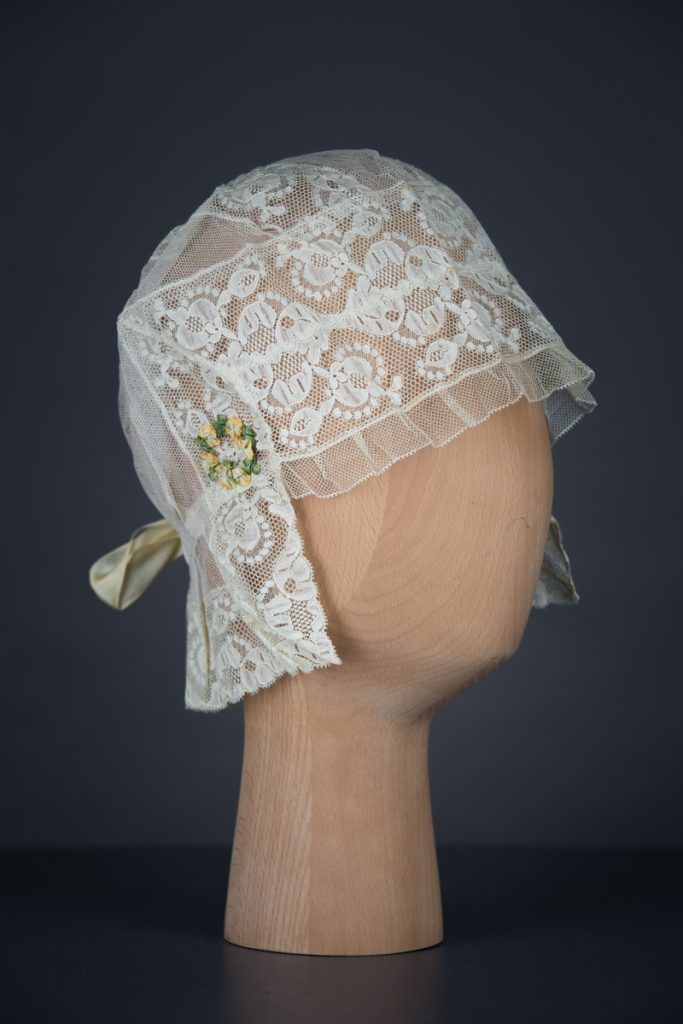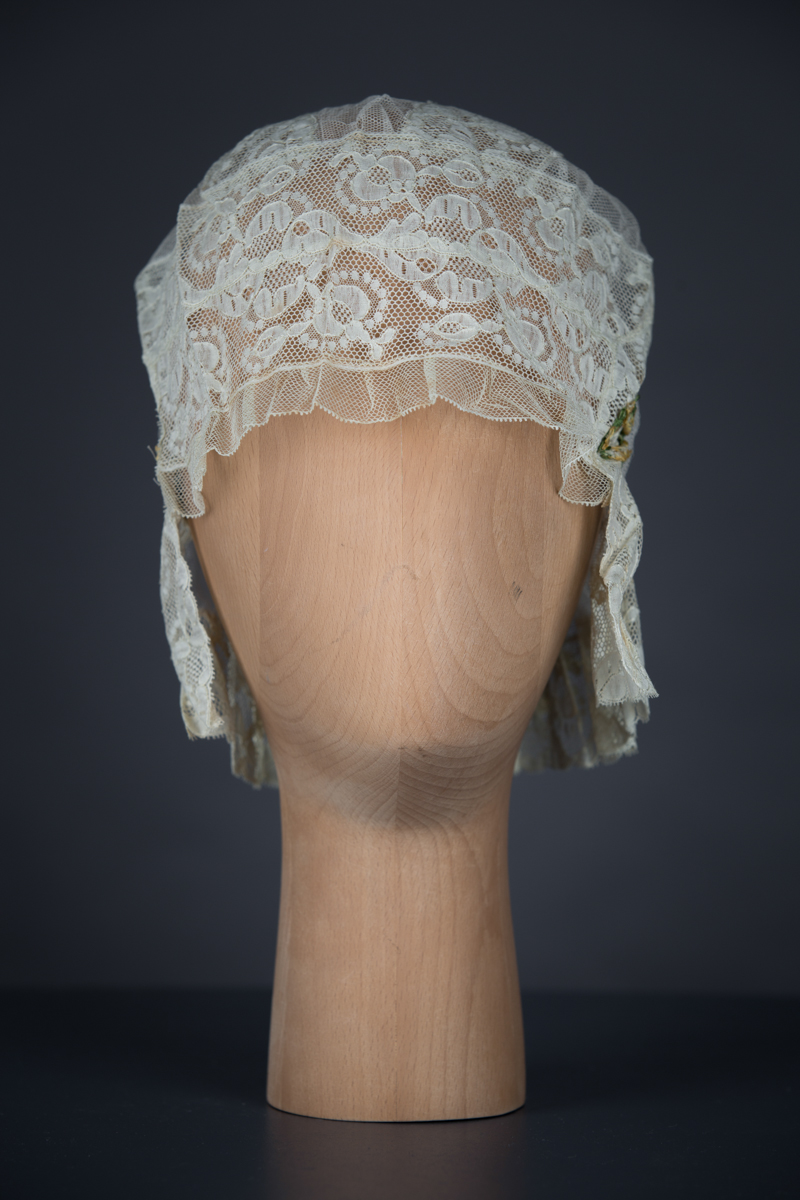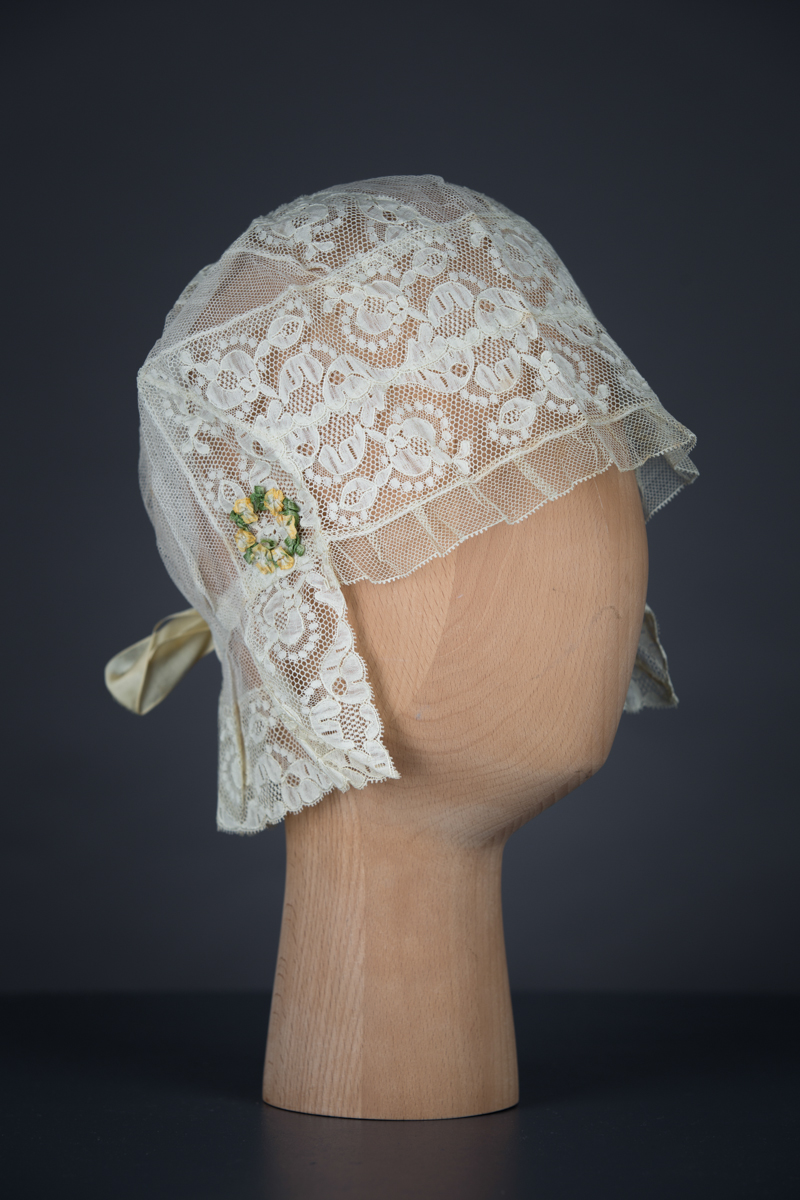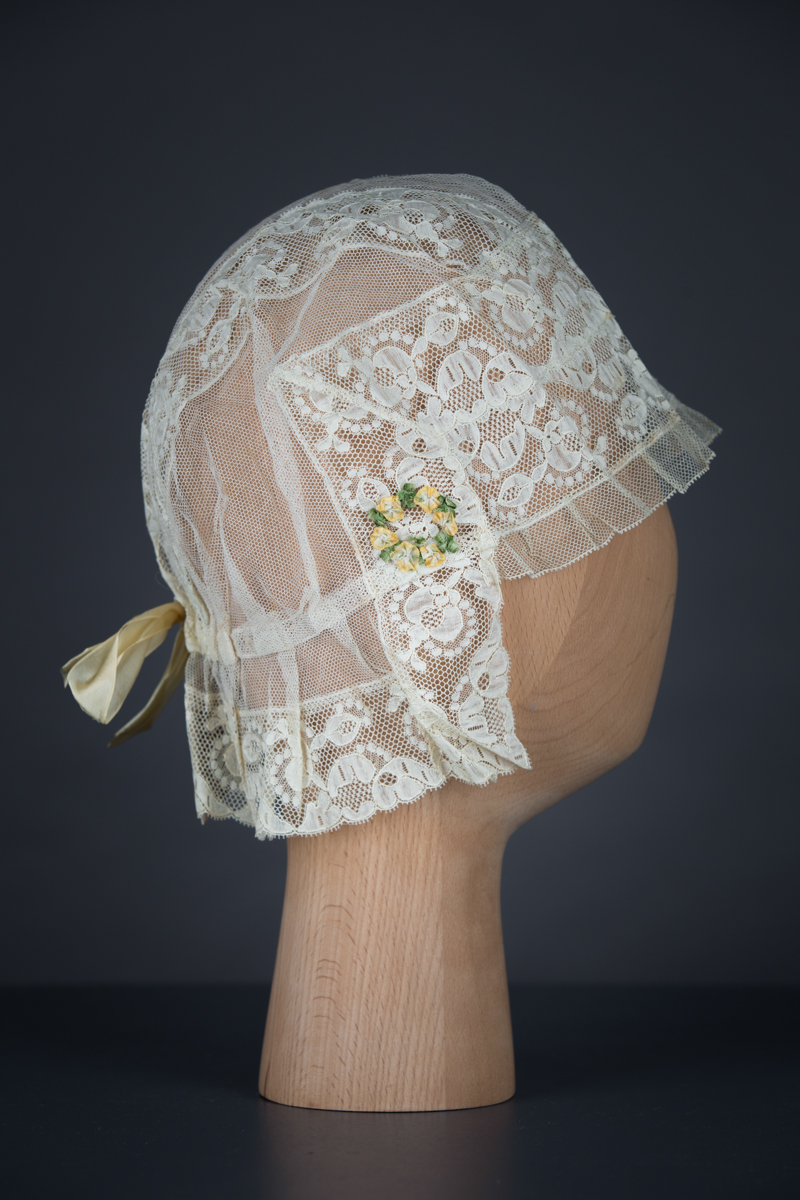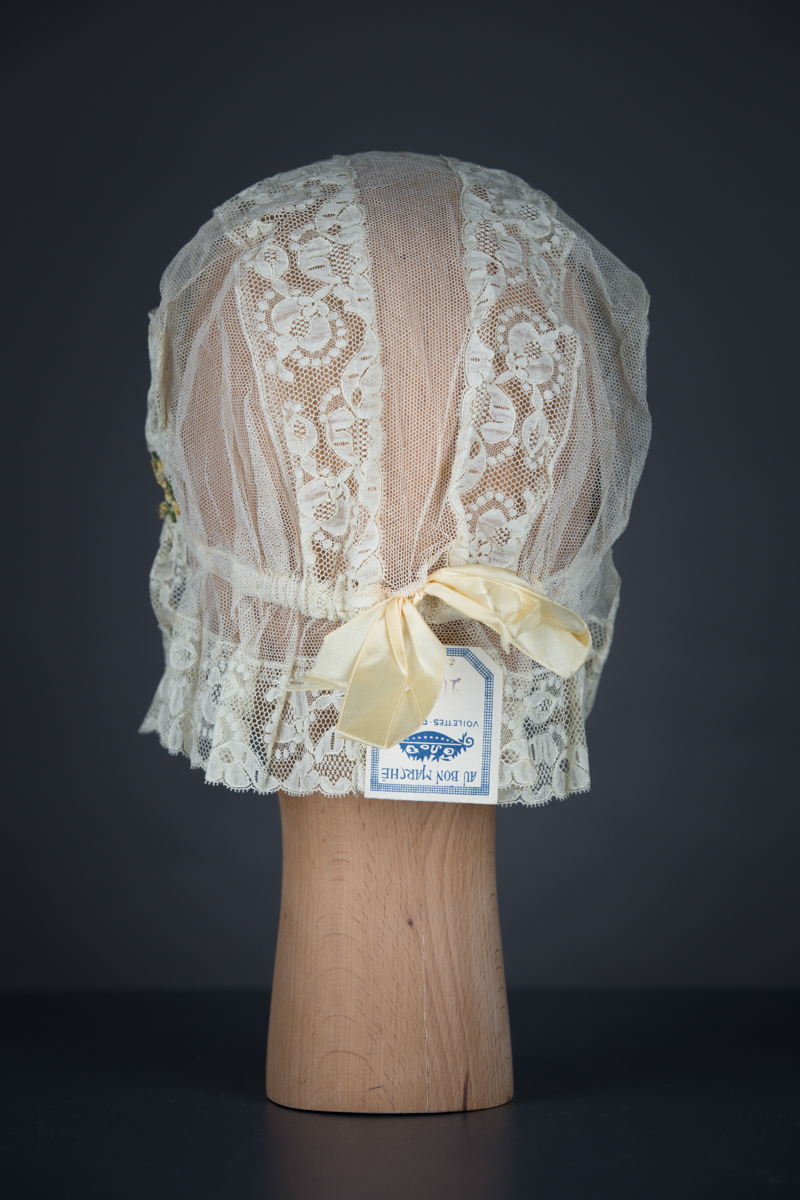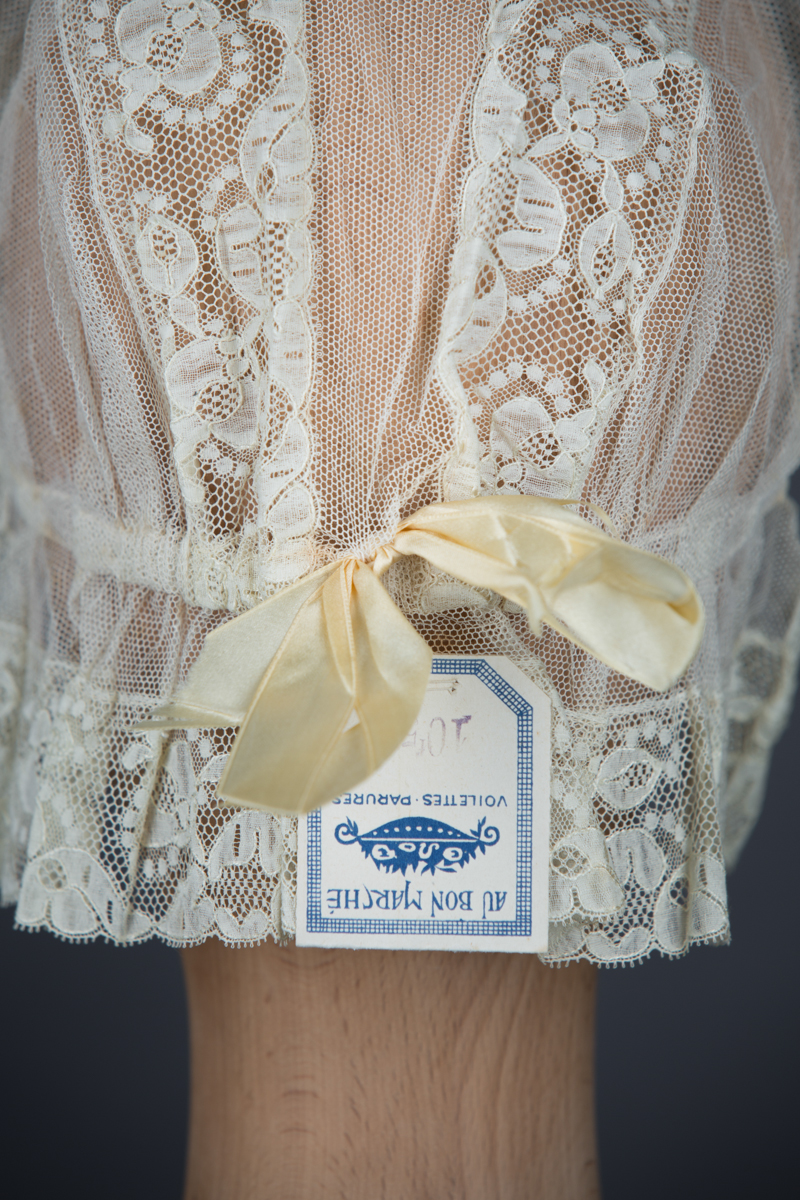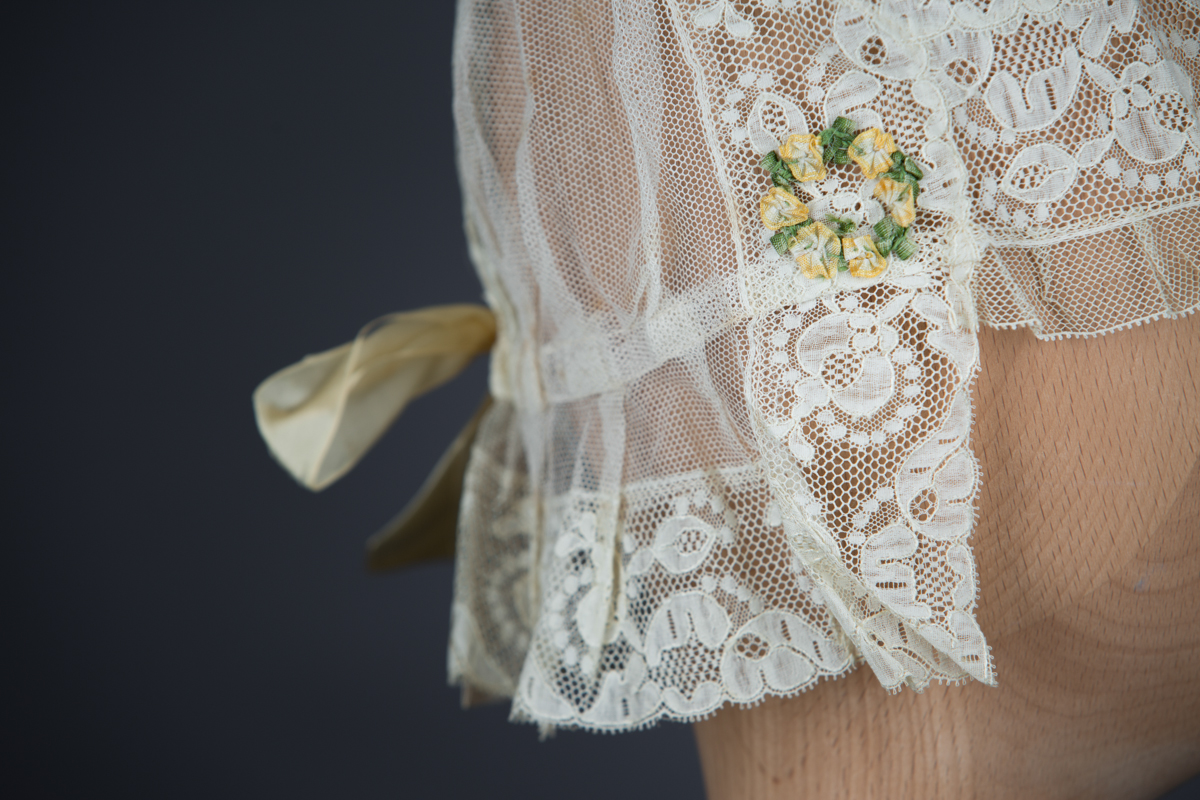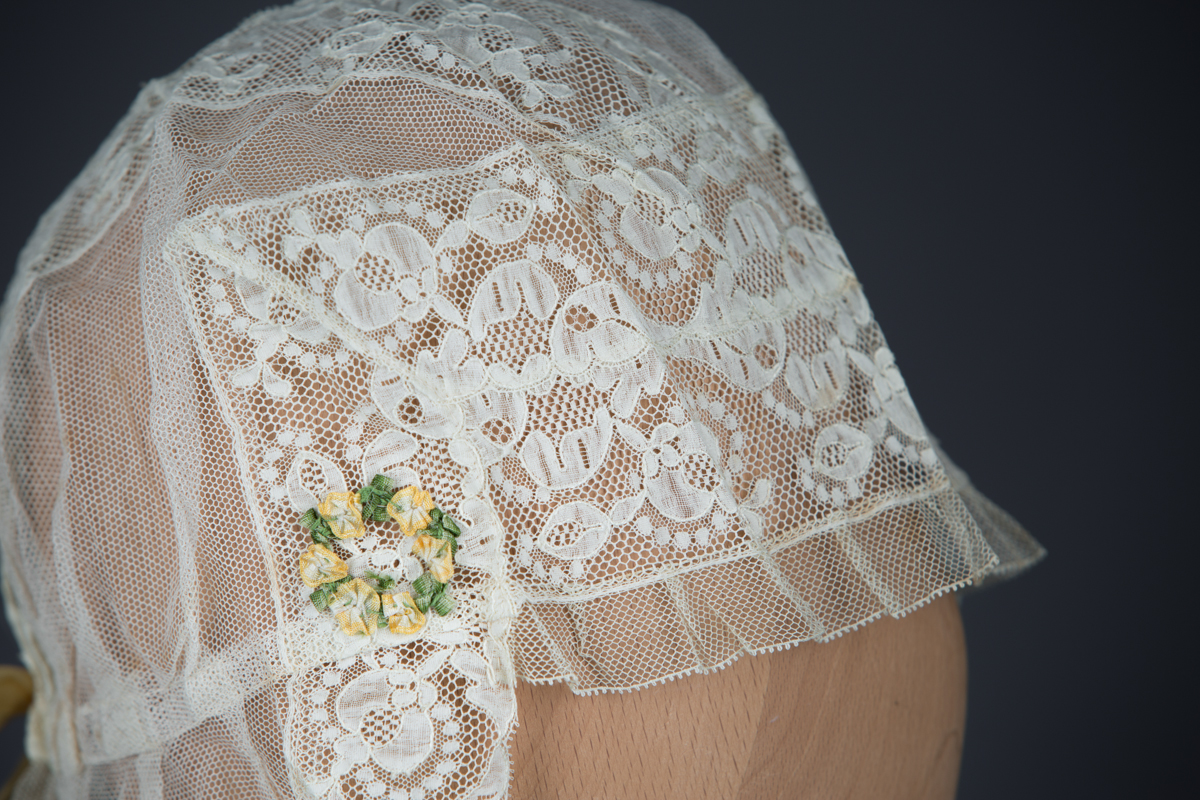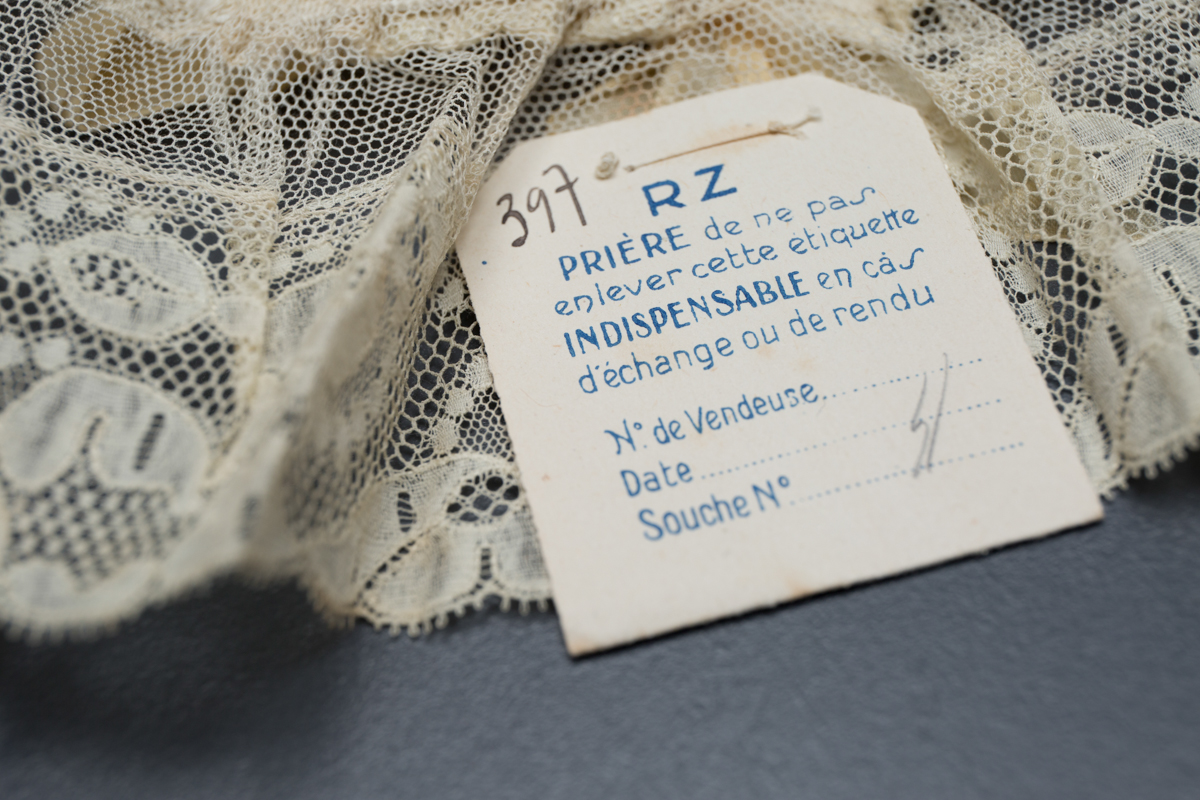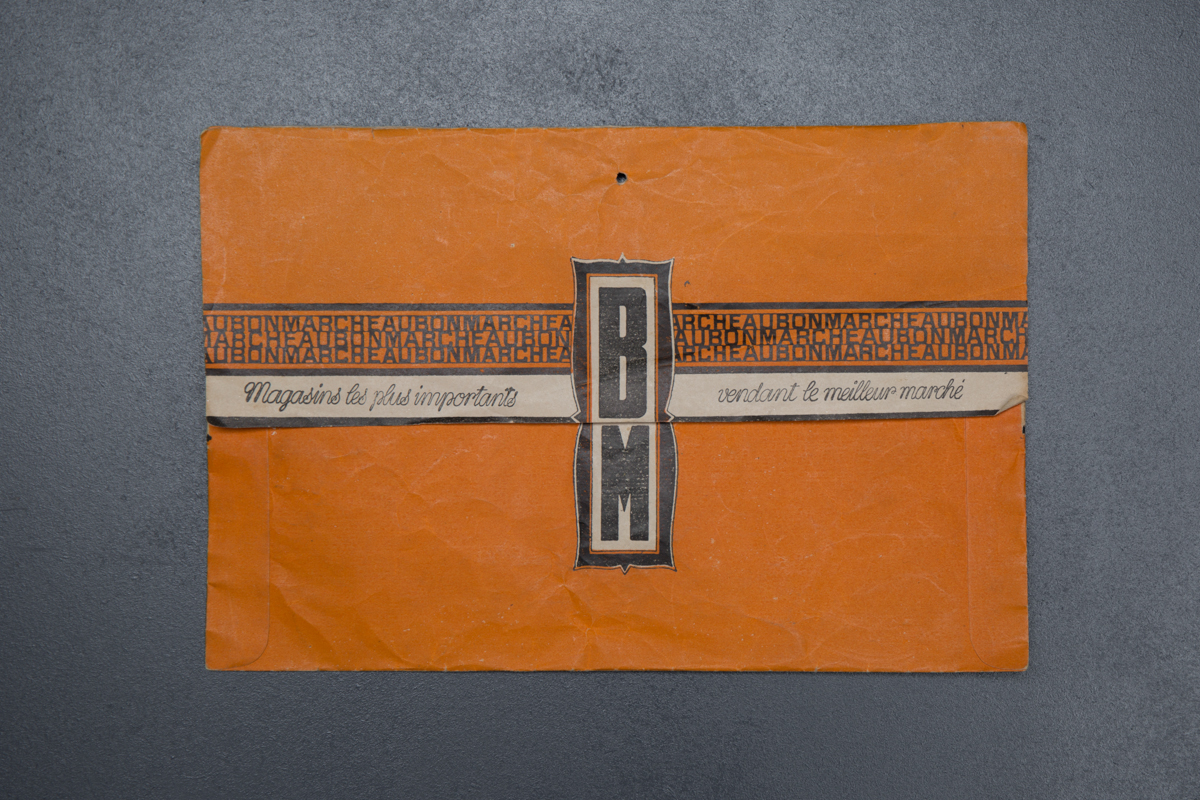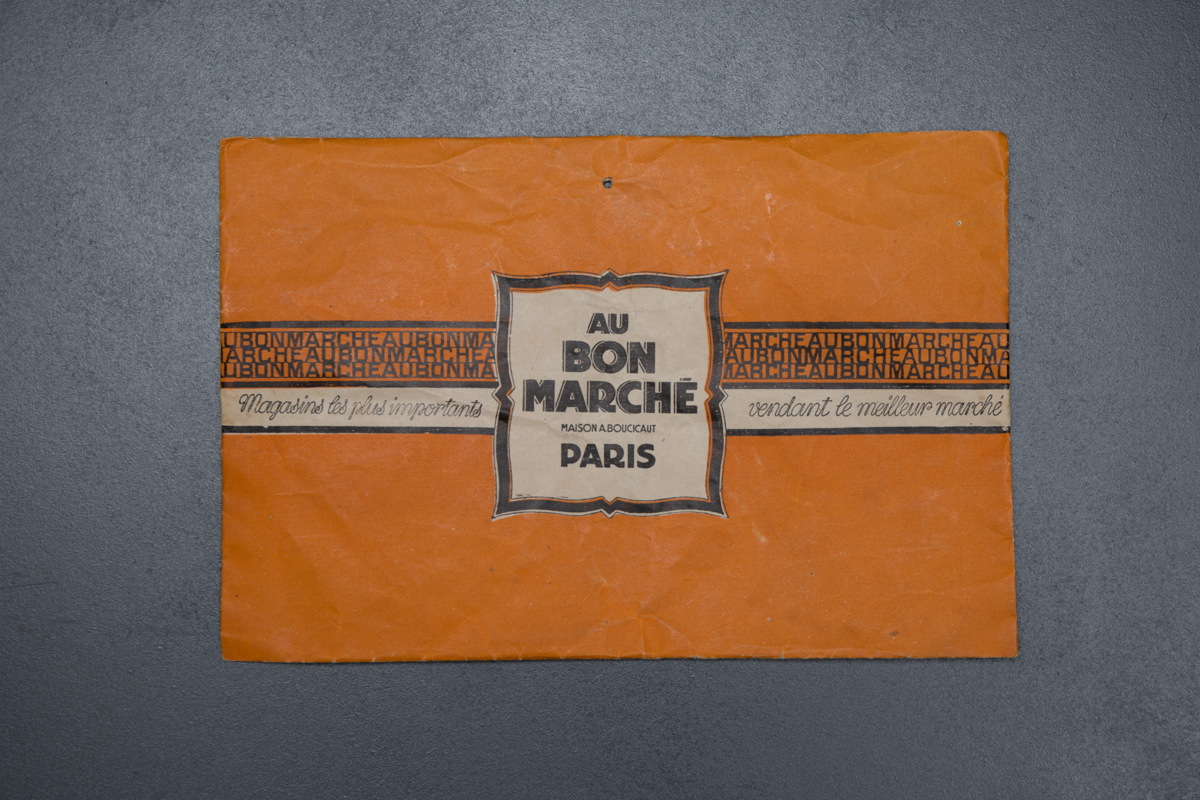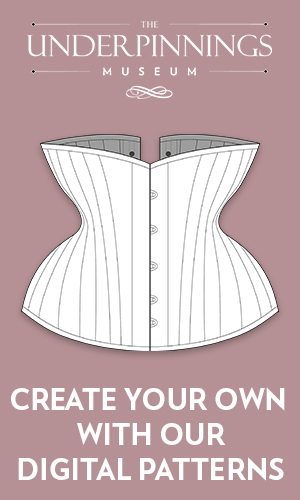Date: c. 1910s
Origin: France
Fabric: Tulle and lace
Brand: Au Bon Marché
This boudoir cap has a base of delicate cotton tulle, panelled with graphically seamed leavers lace trims. A yellow silk bow trims the rear of the cap, with appliquéd silk ribbon roses forming circle motifs on both sides of the head. The attached paper tag at the rear of the cap states that the garment came from Au Bon Marché, a Parisian department store, from the ‘veils and ornaments’ department. The rear of this tag asks the customer: ‘please do not remove this essential label, in case of exchange or return’. It also contains space for the identification number of the saleswoman, date and stock number.
Au Bon Marché was founded in 1838 in Paris as an early department store, originally selling a range of goods such as haberdashery and umbrellas. The store still exists today and is owned by the LVMH corporation, now specialising in luxury goods.
The boudoir cap was originally a type of lingerie headwear, most commonly worn during the nineteenth to early twentieth centuries. It was originally worn over undressed hair, worn in the privacy of the boudoir alongside nightwear. In the 1910s and 1920s, it would be commonly worn to protect shorter hair styles during sleep. As the designs became more and more elaborate towards the 1930s, it began to be considered more of a decorative hair net. Like other forms of lingerie, boudoir caps were usually made in fine fabrics such as lace, tulle and satin. Embellishment was often profuse, with techniques such as ribbonwork being particularly commonplace.
From the collection of Karolina Laskowska
